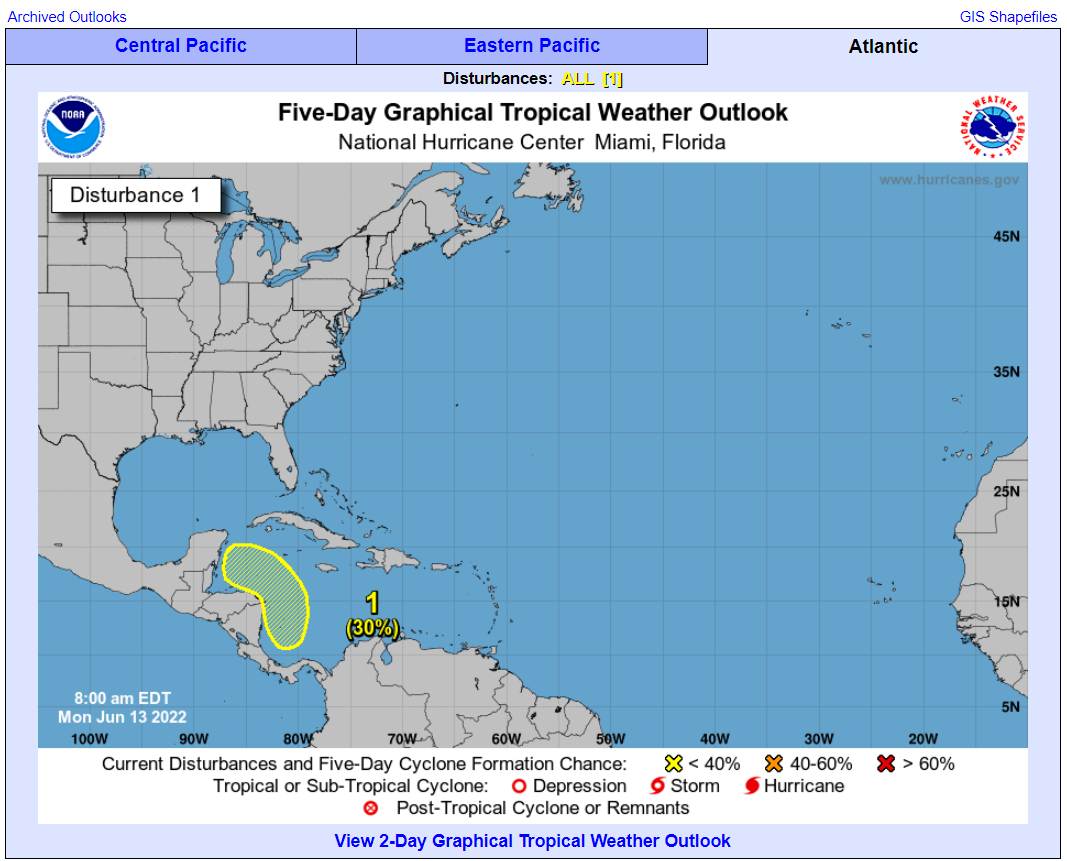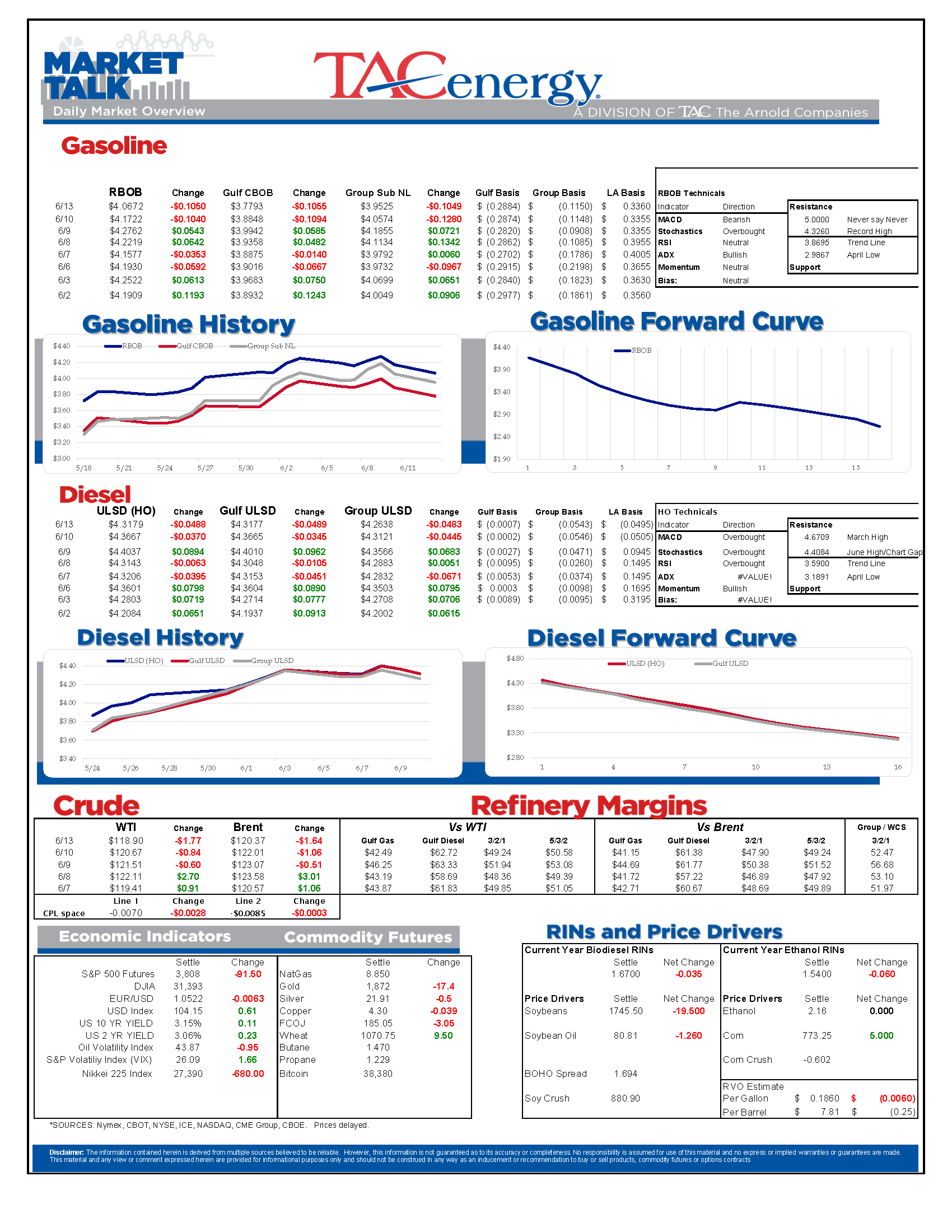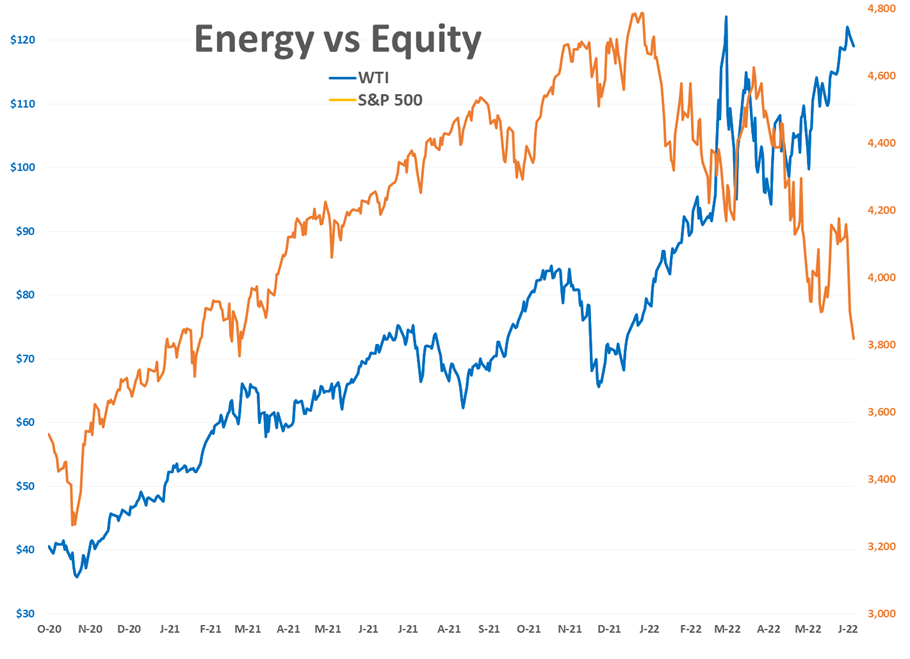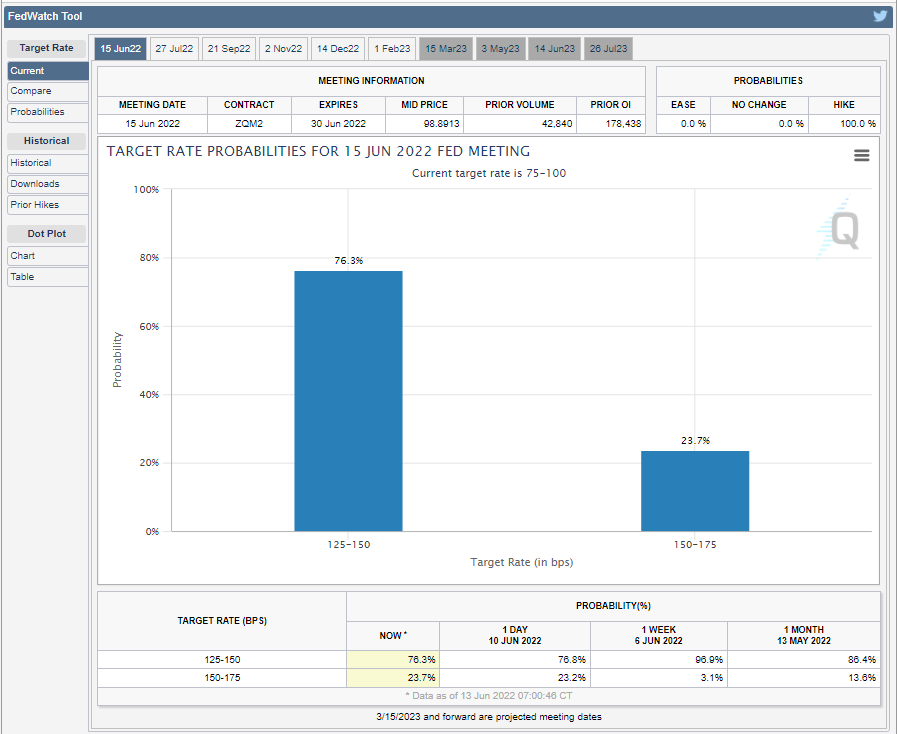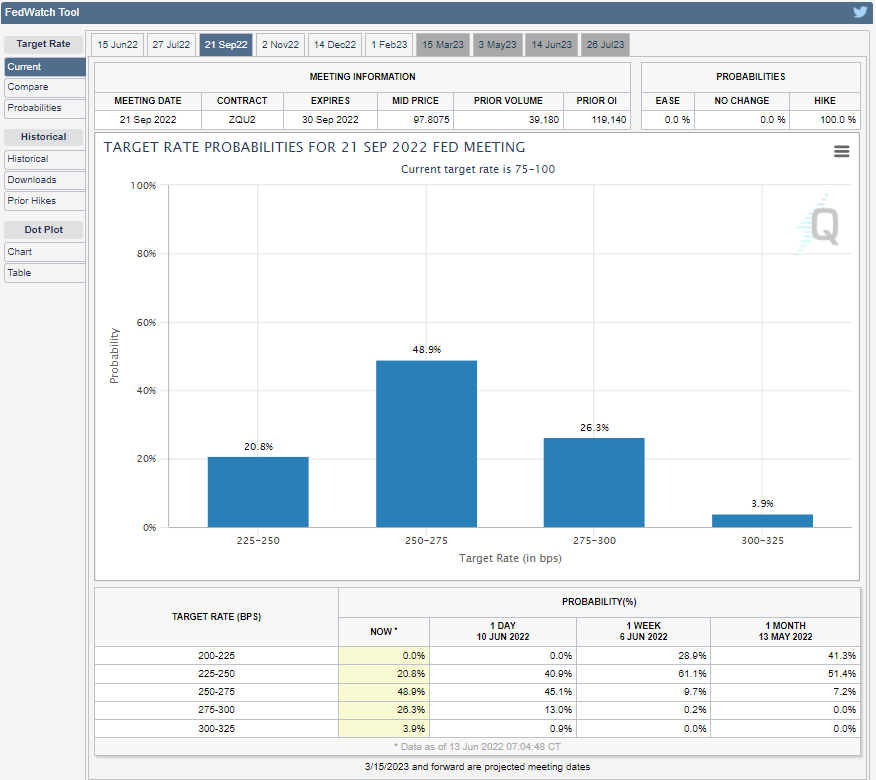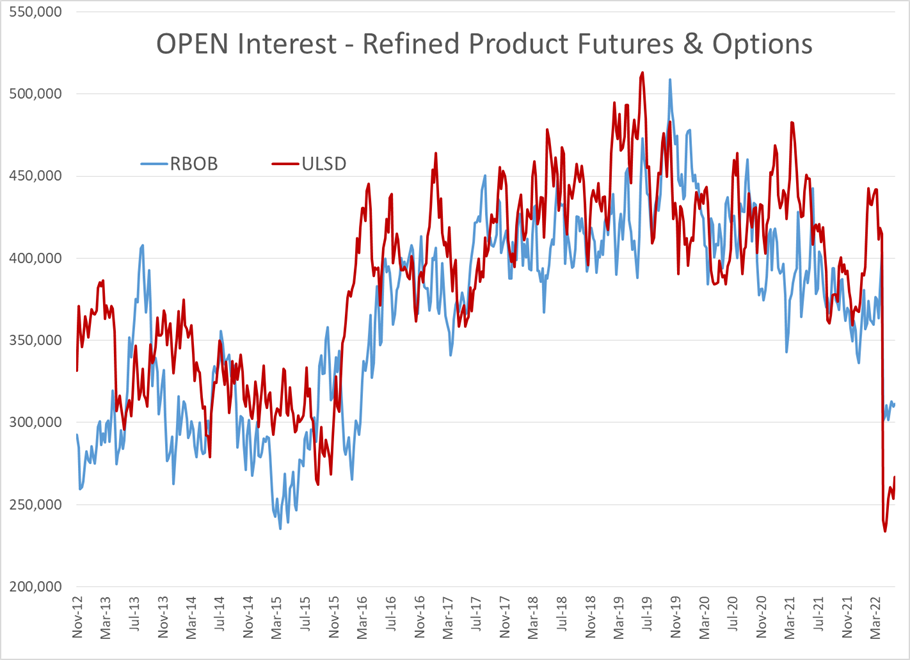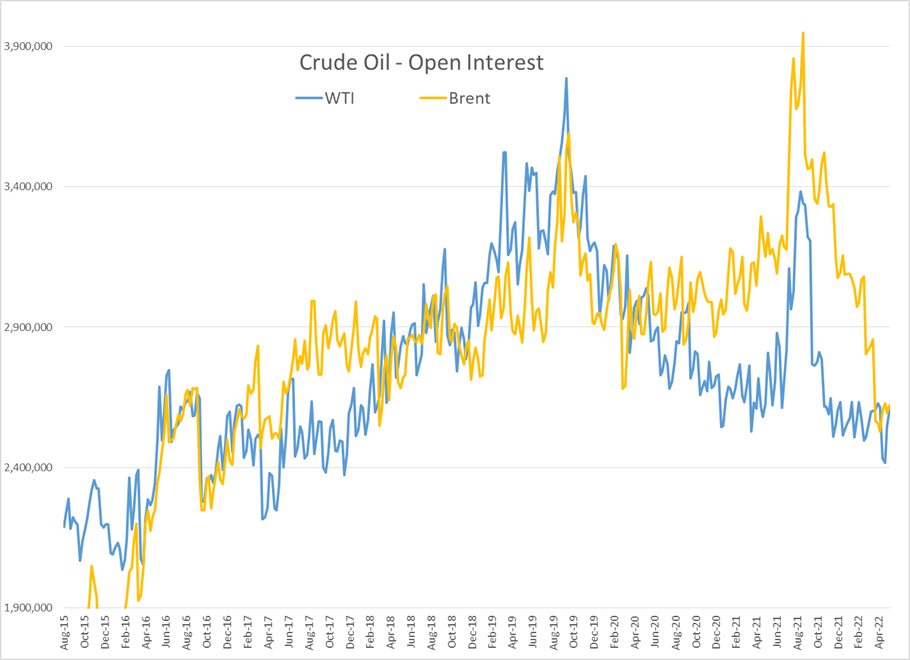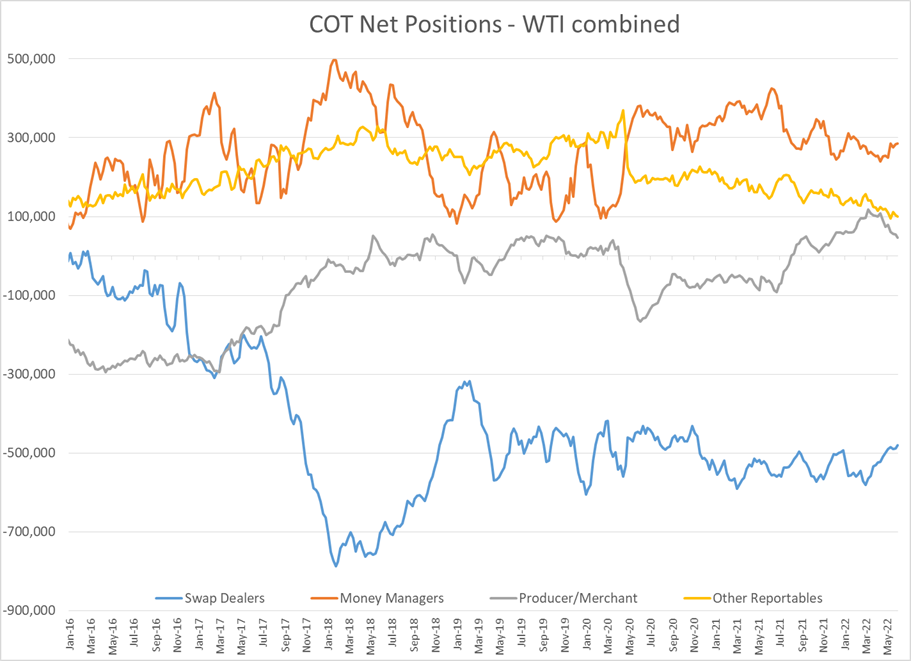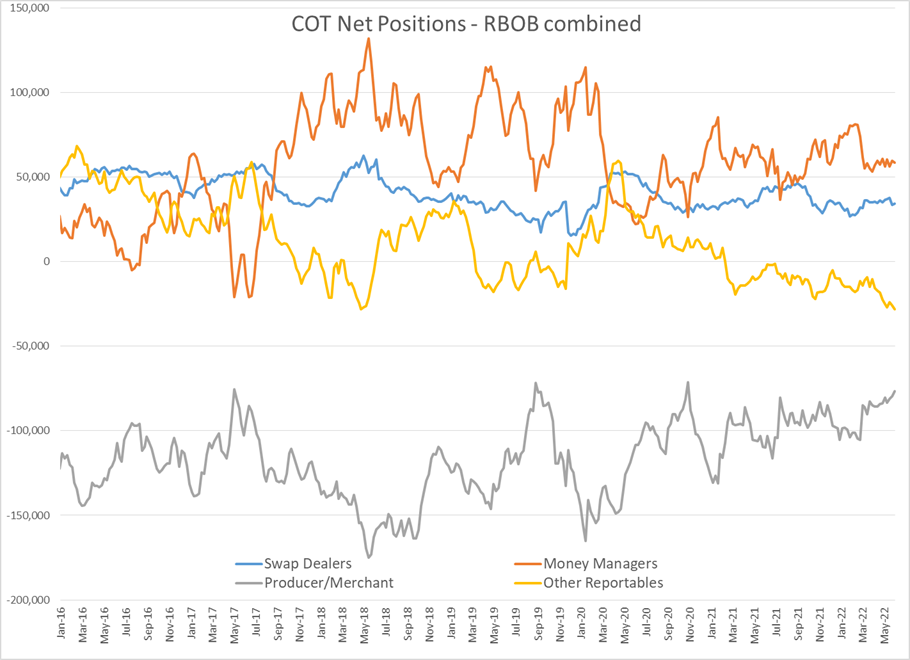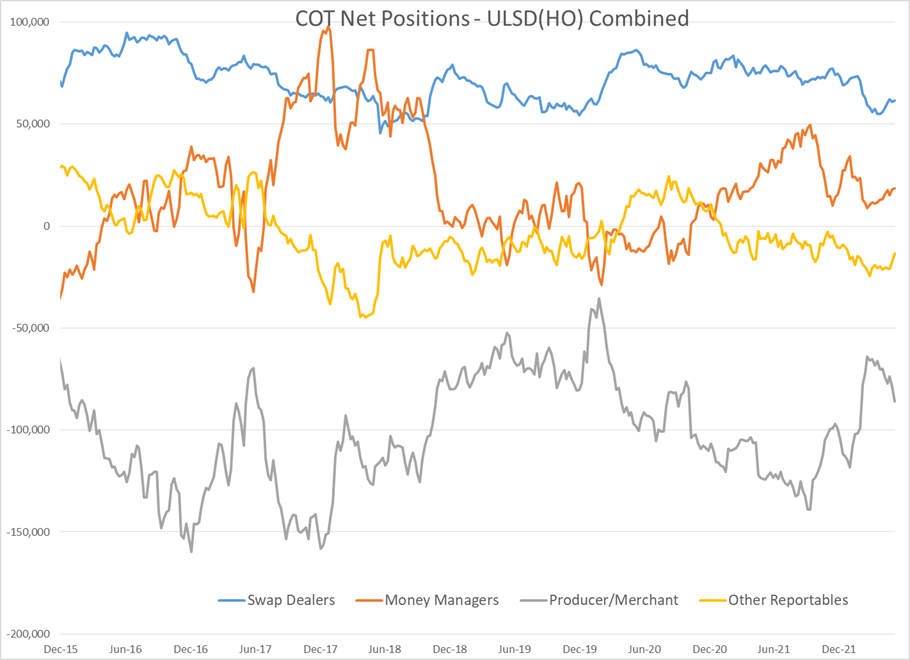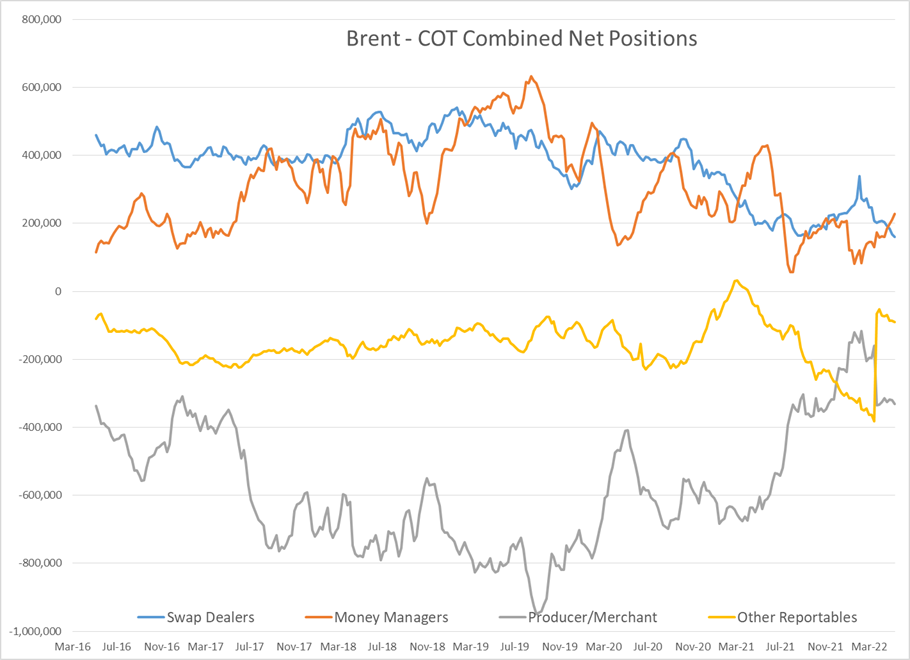Energy And Equity Markets Around The World Are Seeing Another Wave Of Heavy Selling To Start The Week

Energy and equity markets around the world are seeing another wave of heavy selling to start the week, after Friday’s session ended on a bearish note. Gasoline prices are leading the way lower this morning, and while they’re some 25 cents lower than the high trade Friday, the pattern we’ve seen lately suggests we shouldn’t expect the weakness to last too long.
Equity indices look much more bearish than energy futures, with their May lows taken out in the early going this morning, which leaves the door open to another big move lower. Energy futures meanwhile still have a ways to go before threatening the bullish trend lines that have helped refined product prices more than double since December. That global “Energy Shock” is center stage in the financial market fallout as a key driver of the inflation that’s holding at 40 year highs and forcing both the FED and the average consumer to consider change their behavior.
Before Friday’s inflation reading, fed fund futures were only pricing in a 3% chance of a 75 point rate hike at this week’s meeting, and now they’re pricing in a 23% chance of an increase greater than 50 points. The outer months are seeing similar moves, with the odds that the FED won’t continue with a series of 50 point or greater hikes in July and September dropping rapidly as the inflation battle realities sink in.
The expectations for a more hawkish FED seem to be contributing heavily to an inversion in the 2 year vs 10 year treasury yield curve, an indicator that is often pointed to as a precursor to most US Recessions. As the chart below shows, a major difference in that yield curve vs what we saw in 2000, 2007 and 2019 is that the shorter term treasury rates have not come anywhere close to inverting, which highlights just how dramatic the FED’s upcoming moves are vs what we’ve seen so far this century.
Money managers continue to show mixed feelings about energy contracts, adding to net length in ULSD, WTI and Brent, while reducing their exposure to RBOB and Gasoil contracts. Open interest for all contracts remains at noticeably low levels, as both hedgers and speculators seem to be waiting to jump back in.
Baker Hughes reported a net increase of 6 oil rigs and no change in gas rigs drilling in the US last week. New Mexico accounted for 5 of the 6 added rigs, which could be a sign that drillers are starting to work through the large amount of federal leases signed in the past couple of years, and affirms recent reports that growth in the Permian could outpace that of just about every country in the world.
The National Hurricane Center is monitoring a system in the Western Caribbean this week, and giving 30% odds this morning of development. While we’re still 3 months away from the peak of the season, and usually storms this time of year don’t pose as much of a threat to the US Gulf Coast as they do in August and September, any potential system will need to be monitored closely this year given how tight the refinery network is already.
Click here to download a PDF of today's TACenergy Market Talk.
News & Views
View All
Energy Futures Are Caught Up In Headline Tug-O-War This Morning
Energy futures are caught up in headline tug-o-war this morning with Canadian oil production concerns and a positive US GDP report trying to push prices higher while sinking Chinese demand worries and Gaza ceasefire hopes are applying downward pressure. The latter two seem to be favored more so far this morning with WTI and Brent crude oil futures down ~45 cents per barrel, while gasoline and diesel prices are down about half a cent and two cents, respectively.
No news is good news? Chicago gasoline prices dropped nearly 30 cents yesterday, despite there not being any update on Exxon’s Joliet refinery after further damage was discovered Wednesday. Its tough to say if traders have realized the supply situation isn’t as bad as originally thought or if this historically volatile market is just being itself (aka ‘Chicago being Chicago’).
The rain isn’t letting up along the Texas Gulf Coast today and is forecasted to carry on through the weekend. While much of the greater Houston area is under flood watch, only two refineries are within the (more serious) flood warning area: Marathon’s Galveston Bay and Valero’s Texas City refineries. However, notification that more work is needed at Phillip’s 66 Borger refinery (up in the panhandle) is the only filing we’ve seen come through the TECQ, so far.
Premiums over the tariff on Colonial’s Line 1 (aka linespace value) returned to zero yesterday, and actually traded in the negatives, after its extended run of positive values atypical of this time of year. Line 1’s counterpart, Line 2, which carries distillates from Houston to Greensboro NC, has traded at a discount so far this year, due to the healthy, if not over-, supply of diesel along the eastern seaboard.
Click here to download a PDF of today's TACenergy Market Talk.

WTI And Brent Crude Oil Futures Are Trading ~$1.50 Per Barrel Lower In Pre-Market Trading
The across-the-board drawdown in national energy stockpiles, as reported by the Department of Energy yesterday, stoked bullish sentiment Wednesday and prompt month gasoline, diesel, and crude oil futures published gains on the day. Those gains are being given back this morning.
The surprise rate cut by the People’s Bank of China is being blamed for the selling we are seeing in energy markets this morning. While the interest rate drop in both short- and medium-term loans won’t likely affect energy prices outright, the concern lies in the overall economic health of the world’s second largest economy and crude oil consumer. Prompt month WTI and Brent crude oil futures are trading ~$1.50 per barrel lower in pre-market trading, gasoline and diesel are following suit, shaving off .0400-.0450 per gallon.
Chicagoland RBOB has maintained its 60-cent premium over New York prices through this morning and shows no sign of coming down any time soon. Quite the opposite in fact: the storm damage, which knocked Exxon Mobil’s Joliet refinery offline on 7/15, seems to be more extensive than initially thought, potentially extending the repair time and pushing back the expected return date.
There are three main refineries that feed the Chicago market, the impact from one of them shutting down abruptly can be seen in the charts derived from aforementioned data published by the DOE. Refinery throughput in PADD 2 dropped 183,000 barrels per day, driving gasoline stockpiles in the area down to a new 5-year seasonal low.
While it seems all is quiet on the Atlantic front (for now), America’s Refineryland is forecasted to receive non-stop rain and thunderstorms for the next four days. While it may not be as dramatic as a hurricane, flooding and power outages can shut down refineries, and cities for that matter, all the same, as we learned from Beryl.

